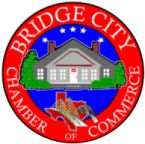
The Great Tech Divide
In today’s rapidly evolving digital landscape, access to technology has become as essential as running water or electricity. It’s the gateway to education, employment, healthcare, and civic engagement. Yet, like so many other aspects of our society, not everyone enjoys equal access to this vital resource. This phenomenon, known as the digital divide, is a growing concern that’s leaving too many Bridge City residents on the wrong side of progress.
As I delve into this critical issue, I can’t help but reflect on my own experiences. Growing up in a lower-income neighborhood, I witnessed firsthand how the lack of reliable internet and modern devices could hinder a child’s ability to learn and thrive. My neighbor, Sarah, a bright young girl, often had to do her homework at the public library because her family couldn’t afford a home computer. The frustration and sense of exclusion I saw in her eyes still haunt me.
But Sarah’s story is not unique. Across Bridge City, and indeed, throughout the country, millions are grappling with the consequences of the digital divide. Whether it’s limited broadband access, outdated devices, or a lack of digital literacy skills, these barriers are creating a vast chasm between the tech-empowered and the tech-deprived. And as our city embraces the promise of future urban technologies, the risk of exacerbating these inequities looms large.
Mapping the Digital Divide
To understand the full scope of the digital divide in Bridge City, we must first examine the underlying factors that contribute to this growing problem. According to the National League of Cities, the three primary causes are: affordability, accessibility, and digital literacy.
Affordability: Low-income households are disproportionately affected by the high cost of internet and digital devices. In Bridge City, a staggering 62% of households earning less than $20,000 per year lack reliable broadband access, compared to just 18.2% of those earning over $75,000.
Accessibility: Even in areas with available broadband infrastructure, the physical reach and quality of the service can vary greatly. Rural and marginalized neighborhoods often face challenges in obtaining high-speed, consistent internet connections.
Digital Literacy: The ability to navigate the digital world is essential, yet many residents, particularly older adults and certain racial/ethnic groups, lack the necessary skills and confidence to fully leverage technology. This digital skills gap further exacerbates the divide.
The consequences of these disparities are far-reaching. Children in digitally disconnected households struggle to keep up with their peers, missing out on educational opportunities and resources. Adults face reduced job prospects and limited access to essential services, while the elderly become increasingly isolated from their communities.
Bridging the Divide: Innovative Solutions
As Bridge City embraces the exciting potential of future urban technologies, such as smart city initiatives, the Internet of Things, and AI-powered platforms, we must ensure these advancements don’t inadvertently widen the digital divide. Instead, we have a responsibility to leverage these innovations to bridge the gap and create a more equitable, inclusive future.
Cities across the country are leading the charge, implementing innovative solutions to promote digital equity. From building wireless networks focused on affordability to partnering with community organizations to distribute devices and offer digital literacy training, local governments are stepping up to the challenge.
One promising approach I’ve been following is the use of mobile technology solutions. By leveraging ubiquitous smartphone ownership, even among low-income households, cities are exploring ways to deliver critical services and educational resources directly to people’s fingertips. Imagine a free, city-sponsored app that provides access to virtual tutoring, telehealth consultations, and e-government services – all accessible from the palm of your hand.
Another exciting development is the rise of innovative financing models to support digital inclusion efforts. Public-private partnerships, community investment funds, and creative grant programs are empowering cities to tackle the affordability barrier head-on. These collaborative initiatives are ensuring that everyone, regardless of their socioeconomic status, can access the digital tools they need to thrive.
A Whole-of-Community Approach
While municipal leadership is crucial, bridging the digital divide requires a whole-of-community effort. By fostering partnerships between government, businesses, nonprofits, and residents, we can leverage diverse resources, expertise, and perspectives to craft truly impactful solutions.
I’m inspired by the work of organizations like the National Digital Inclusion Alliance, which has compiled an extensive inventory of successful digital equity initiatives. These case studies demonstrate the power of community-driven approaches, where local leaders work hand-in-hand with marginalized groups to address their unique needs and barriers.
For example, the “Digital Navigators” program in St. Louis pairs trained volunteers with low-income residents to provide personalized guidance on accessing affordable internet, acquiring devices, and developing digital skills. This personalized, wrap-around support has proven far more effective than one-size-fits-all initiatives.
Similarly, the city of Austin has leveraged its public library system to become a hub of digital inclusion, offering free computer access, tech workshops, and even Wi-Fi hotspot lending programs. By tapping into trusted community institutions, these efforts have found ways to reach the most vulnerable populations.
The Promise of Future Tech
As Bridge City looks to the future, we must ensure that the exciting advancements in urban technology – from smart infrastructure to AI-powered services – don’t inadvertently leave anyone behind. These innovations have the potential to transform our city, but only if we proactively design them with digital equity in mind.
Imagine a future where autonomous vehicles and drone deliveries revolutionize transportation and logistics, but are accessible to all residents, not just the tech-savvy elite. Or envision a smart city platform that seamlessly integrates healthcare, education, and civic engagement, but is designed with intuitive interfaces and multilingual support to empower every member of our diverse community.
By prioritizing inclusive design, universal access, and comprehensive digital literacy programs, we can harness the power of future technologies to bridge the digital divide, not widen it. It’s a future where no child has to do their homework at the library, no senior citizen feels isolated due to lack of digital skills, and no family is left behind because they can’t afford the latest gadgets.
Forging a More Equitable Future
The digital divide is a complex challenge, but one that we in Bridge City are committed to tackling head-on. By addressing the root causes of affordability, accessibility, and digital literacy, we can create a more inclusive, equitable future where technology empowers, rather than excludes.
This is not just a noble aspiration – it’s an economic and societal imperative. As the Bridge City Chamber of Commerce has recognized, investing in digital equity is crucial for our city’s long-term prosperity. After all, a thriving, tech-savvy workforce and engaged, digitally literate citizenry are the foundations upon which the cities of tomorrow will be built.
The road ahead may be challenging, but I’m confident that by working together – government, businesses, nonprofits, and community members – we can bridge the digital divide and ensure that every resident of Bridge City has the tools and opportunities to succeed in the digital age. It’s a future worth fighting for, and one that I’m committed to helping create.


